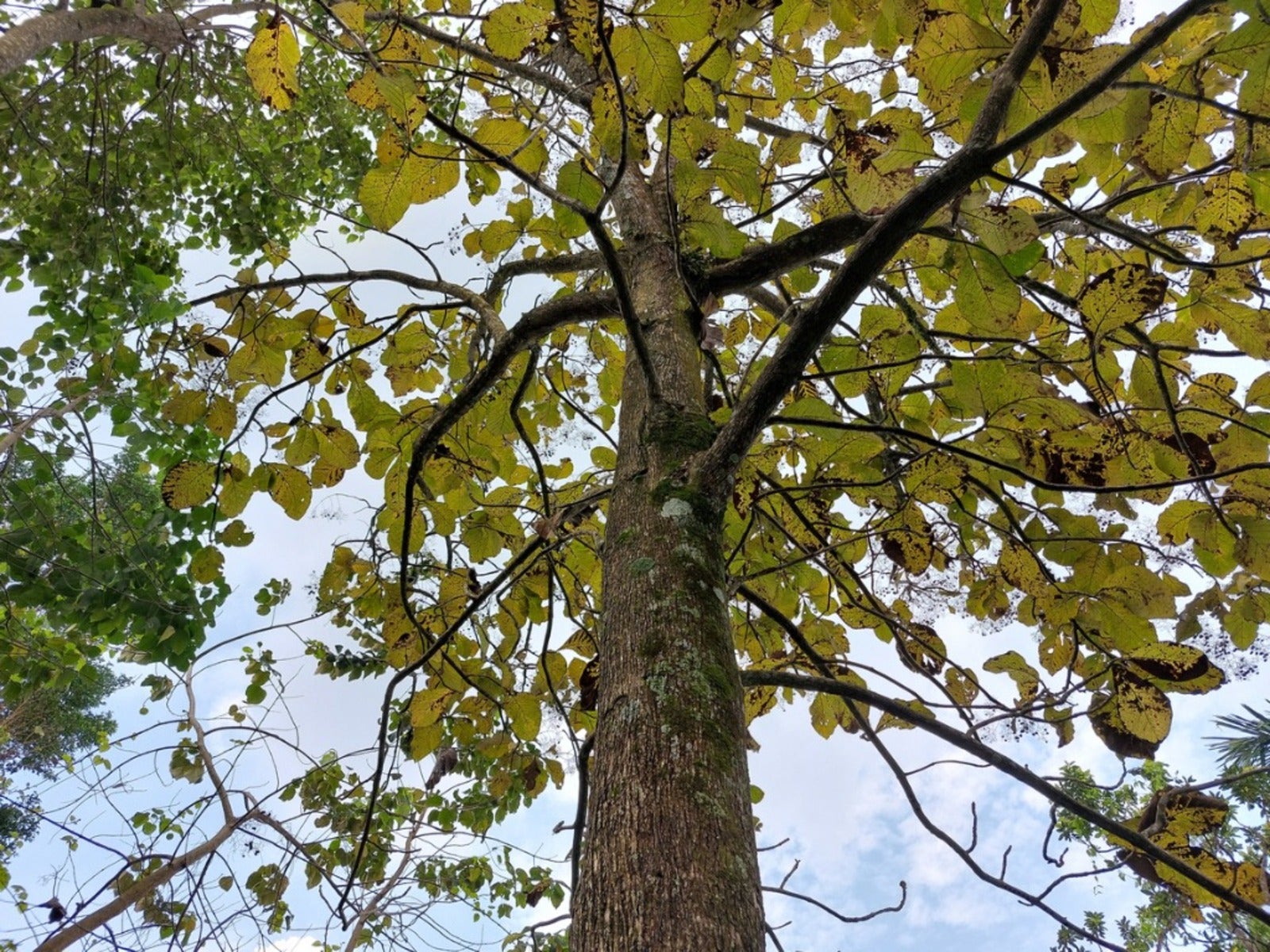Teak Tree Facts: Information About Teak Tree Uses And More


What are teak trees? They are tall, dramatic members of the mint family. The tree’s foliage is red when the leaves first come in but green when they mature. Teak trees produce wood that is known for its durability and beauty. For more teak tree facts and information about teak tree uses, read on.
Teak Tree Facts
Few Americans grow teak trees (Tectona grandis), so it is natural to ask: what are teak trees and where do teak trees grow? Teaks are hardwood trees that grow in the south of Asia, usually in monsoon rainforests, including India, Myanmar, Thailand, and Indonesia. They can be found growing throughout that region. However, many native teak forests have vanished due to overlogging.
Teak trees can grow to 150 feet (46 m.) tall and live for 100 years. Teak tree leaves are reddish green and rough to the touch. Teak trees shed their leaves in the dry season and then regrow them when it rains. The tree also bears flowers, very pale blue blossoms arranged in clusters at the branch tips. These flowers produce fruit called drupes.
Teak Tree Growing Conditions
Ideal teak tree growing conditions include a tropical climate with generous daily sunshine. Teak trees also prefer fertile, well-draining soil. For the teak to propagate, it must have insect pollinators to distribute pollen. Generally, this is done by bees.
Teak Tree Uses
The teak is a beautiful tree, but much of its commercial value has been as lumber. Under the scaly brown bark on the trunk of the tree lies the heartwood, a deep, dark gold. It is acclaimed because it can withstand weather conditions and resists decay.
The demand for teak wood is much greater than its supply in nature, so entrepreneurs have established plantations to grow the valuable tree. Its resistance to wood rot and shipworms makes it perfect for building large projects in wet areas, such as bridges, decks, and boats.
Teak is also used to make medicine in Asia. Its astringent and diuretic properties help to limit and reduce swelling.
Gardening tips, videos, info and more delivered right to your inbox!
Sign up for the Gardening Know How newsletter today and receive a free copy of our e-book "How to Grow Delicious Tomatoes".

Teo Spengler is a master gardener and a docent at the San Francisco Botanical Garden, where she hosts public tours. She has studied horticulture and written about nature, trees, plants, and gardening for more than two decades. Her extended family includes some 30 houseplants and hundreds of outdoor plants, including 250 trees, which are her main passion. Spengler currently splits her life between San Francisco and the French Basque Country, though she was raised in Alaska, giving her experience of gardening in a range of climates.
-
 4 Superfast Composting Methods: Turn Waste Into Garden Gold In 30 Days Or Less
4 Superfast Composting Methods: Turn Waste Into Garden Gold In 30 Days Or LessTry the fastest composting methods to turbocharge your pile and transform kitchen scraps and garden waste into finished compost in just a few weeks.
By Mary Ellen Ellis
-
 Best Spider Plant Soil – Complete Soil Guide And Expert Tips For Keeping Plants Happy
Best Spider Plant Soil – Complete Soil Guide And Expert Tips For Keeping Plants HappySpider plants are fun and easy plants to grow, but what is the best soil for a spider plant? Selecting the right soil is important so they can thrive.
By Bonnie L. Grant